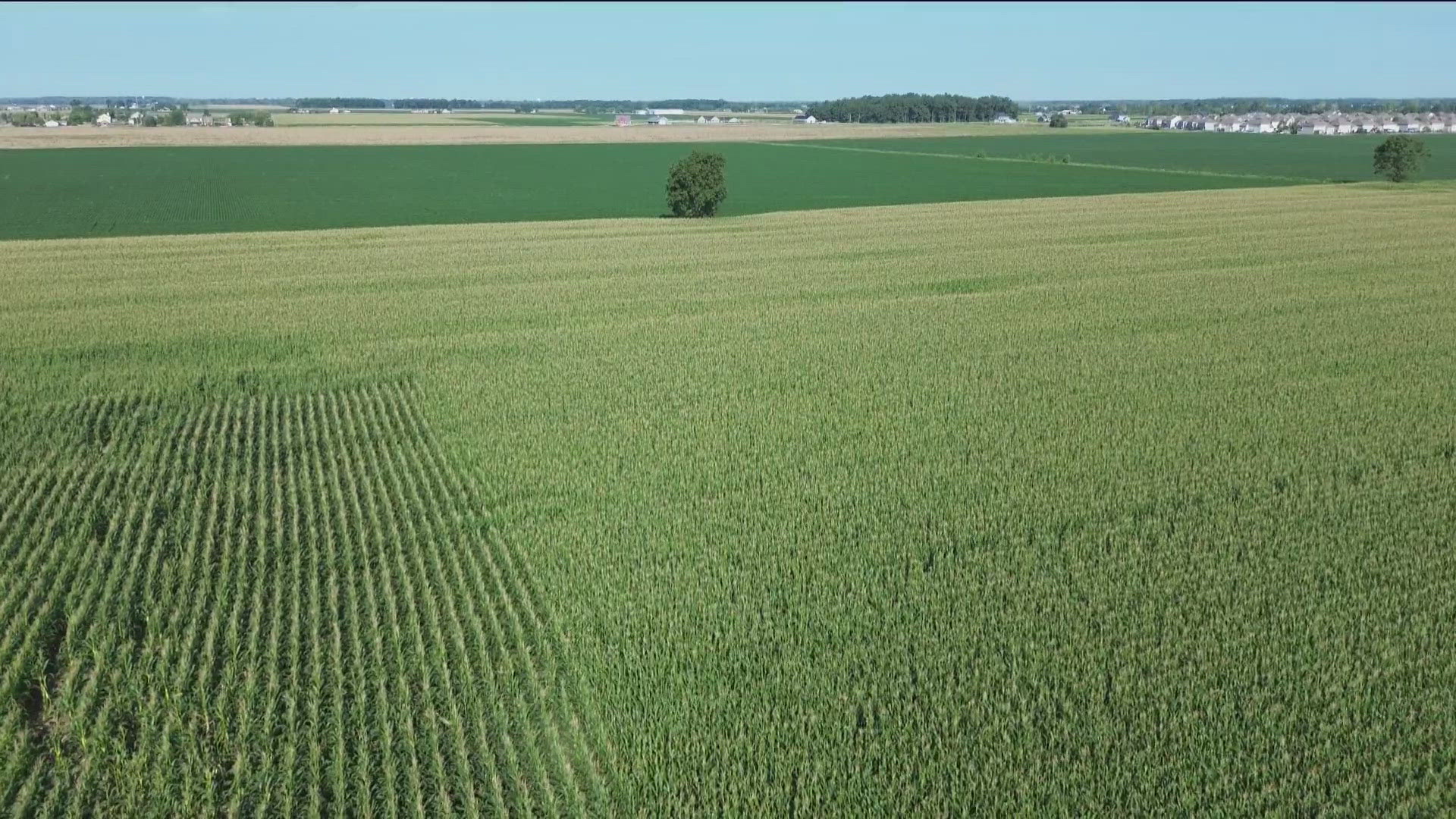WOOD COUNTY, Ohio — As we get closer to Labor Day, corn and soybean crops are in the final stretch of growth before the fall harvest.
How’s it looking for the farmers in northwest Ohio and southeast Michigan? Not very good right now is what we are finding out.
After a very wet spring, the crops were planted later than most farmers would like in mostly May and into June. While the corn is head high and looking great, and the beans are green and full, these crops need rain and a lot of it before it’s too late.
John Moser is a sixth-generation farmer with about 3000 acres between Wood and Sandusky counties. He can tell the soybeans are not developing to what he’d like for a good yield.
"Bean plants, there's some pods there but there's also some pods that are three-quarters of an inch to an inch long and they're nowhere near developed," Moser said. "There's not even any beans in them right now. If we don't get any rain soon, those bean plants naturally abort pods they won't be able to fill so we're at a real crucial time with this bean crop of having it closer to average or well below average."
And the corn is struggling too. This summer there hasn’t been the widespread rain needed in northwest Ohio and southeast Michigan. While the rain was spotty, a sampling of the corn still shows it's doing OK for now.
Farmers have a lot invested in these crops with the cost of fuel, fertilizer and seed. On the back end, prices are not very good. Corn is $3.50 a bushel, soybeans are about $9.50 a bushel and it’s usually a lot more than that.
Moser said you have to look at the global economy to understand farm prices.
“If Brazil is having a big crop or anywhere in South America. What is happening overseas with Ukraine and Russia, that had a huge run-up in our wheat market because the Black Sea was shut down." Moser said. "You almost have to be a global economist to understand how the local economy is affected. We're not having the exports now, there's not as many ships leaving Toledo. So locally, if they don't have a use for it, why should they pay us more for it?"
Some of the earlier planted crops may be harvested as soon as September, but October will be go-time for most area farmers.
The final chapters of this story have yet to be written and now it’s up to Mother Nature.

